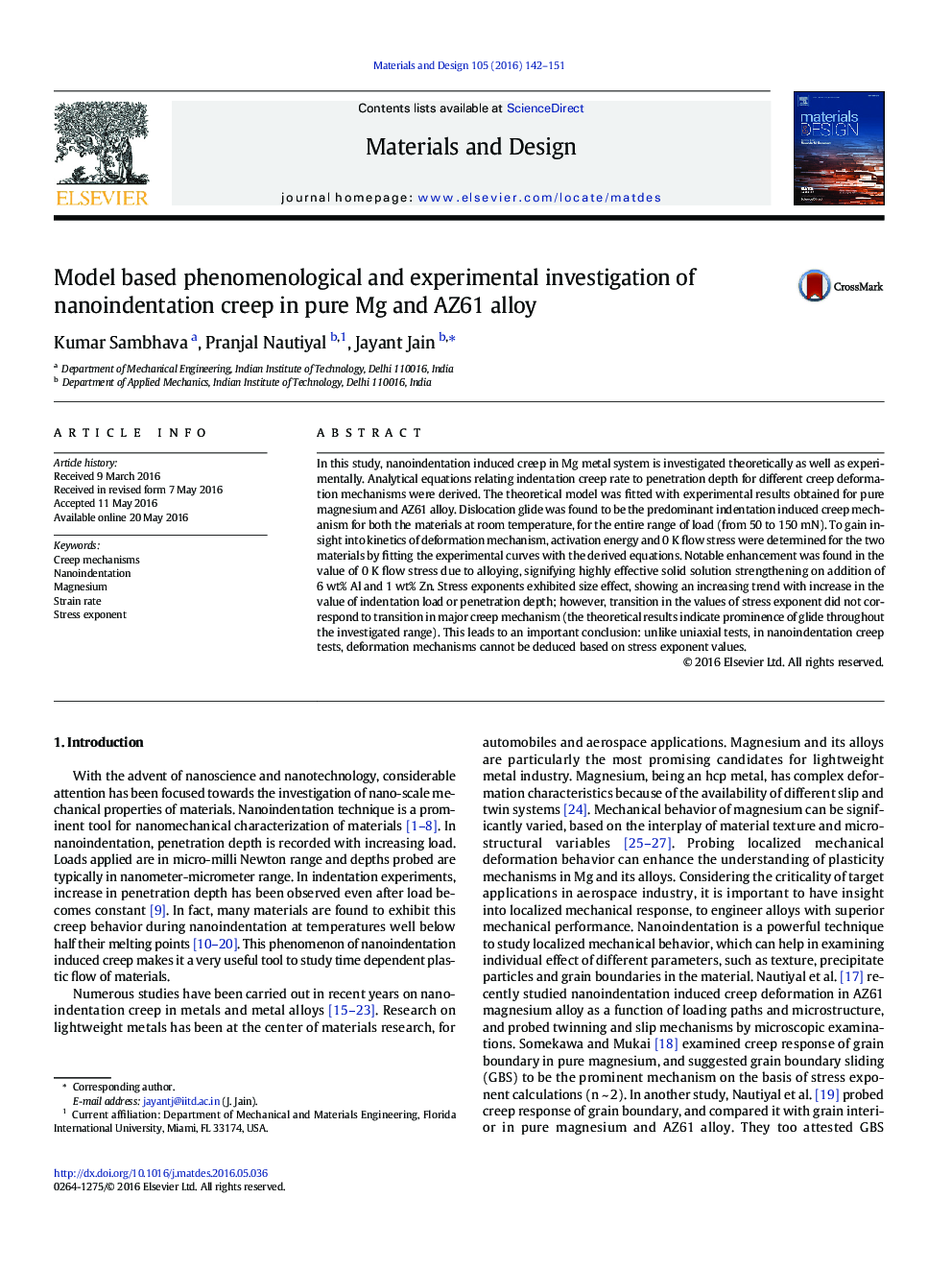| Article ID | Journal | Published Year | Pages | File Type |
|---|---|---|---|---|
| 827825 | Materials & Design | 2016 | 10 Pages |
•Nanoindentation creep strain rate equations for different plastic deformation mechanisms are derived.•Nanoindentation creep experiments are compared with the mathematical model.•Dislocation glide is found to be the prominent room temperature creep mechanism for Mg and AZ61 alloy.•It is found that power-law stress exponent is not an indicator of dominant creep mechanism in nanoindentation.
In this study, nanoindentation induced creep in Mg metal system is investigated theoretically as well as experimentally. Analytical equations relating indentation creep rate to penetration depth for different creep deformation mechanisms were derived. The theoretical model was fitted with experimental results obtained for pure magnesium and AZ61 alloy. Dislocation glide was found to be the predominant indentation induced creep mechanism for both the materials at room temperature, for the entire range of load (from 50 to 150 mN). To gain insight into kinetics of deformation mechanism, activation energy and 0 K flow stress were determined for the two materials by fitting the experimental curves with the derived equations. Notable enhancement was found in the value of 0 K flow stress due to alloying, signifying highly effective solid solution strengthening on addition of 6 wt% Al and 1 wt% Zn. Stress exponents exhibited size effect, showing an increasing trend with increase in the value of indentation load or penetration depth; however, transition in the values of stress exponent did not correspond to transition in major creep mechanism (the theoretical results indicate prominence of glide throughout the investigated range). This leads to an important conclusion: unlike uniaxial tests, in nanoindentation creep tests, deformation mechanisms cannot be deduced based on stress exponent values.
Graphical abstractFigure optionsDownload full-size imageDownload as PowerPoint slide
